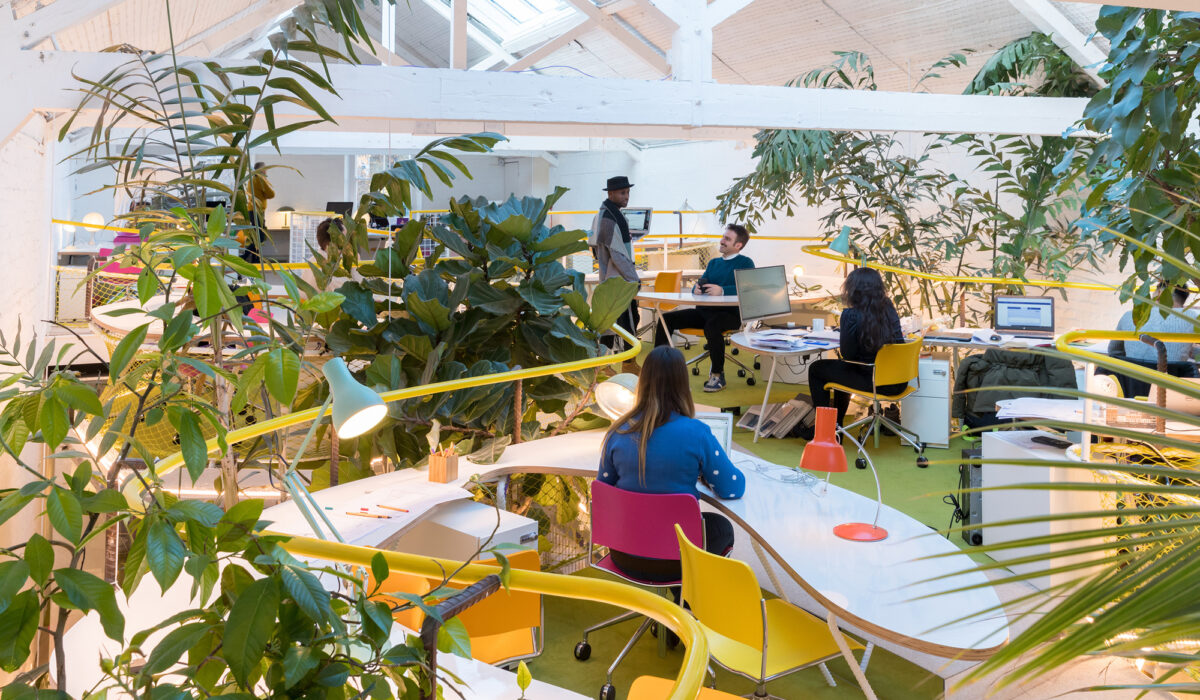Employee well-being and workplace design now a focus!

‘Robotics for All’ as Ecovacs continue innovation in smart robotics
December 20, 2022
The Singing Beauty is a Beauty at Heart too: Palak Muchhal’s incredible tale of benevolence
January 1, 2023Swaviman Das, Director Design, Space Matrix, India writes about increased focus on employee well being in the current work scenario
The way we work has undergone a permanent transition. The Workplace has become very dynamic now with remote and hybrid working integrated into operational strategies across the board. Another major change is the increased focus on employee well-being and satisfaction.
Unlike the past when companies focused on getting maximum leverage out of their office spaces, i.e. on space utilization, today, the focus is on measure of satisfaction, how the workplace environment enables your people to be the most effective – with a focus on functionality, personalization and creating a combination of collaborative as well as flexible workspace. Technologies, ambience, furnishing etc., that facilitate seamless transition between synchronous and asynchronous working, are the norms for future-centric workplace design. Companies are fundamentally changing their office spaces to boost employee engagement and collaboration across different locations.
The key to creating the right mix is to factor in the various demands of contemporary working and employee expectations as well as needs related to their physical and mental wellness. Self-directed layouts, automation, inspiring interiors, sustainability elements, and integration of company culture and corporate identity into the design is a must for great offices.
When companies focus on utilizing each of the above and other elements alongside encouraging employees to enjoy work-life balance, it boosts productivity and retention. An attitude shift from seeing employees as ‘human resources’ to ‘human beings’ is the basis on which the transition has to be built. There are several ways that companies can achieve this objective.
Integration of health and wellness into the office design
Prioritizing employee physical and mental wellness requires employers to make major changes to their conventional office spaces. A positive ambience that is inclusive as well as encouraging for employees to adopt a healthy lifestyle through visual inputs and facilities is a start. Employees need to have a complete peace of mind and assurance of their safety from all kinds of risks including infections. Today’s wellness initiatives need to not only cater to physical health, but also on the mental well-being of the workforce. One of the most effective strategies is to create office spaces that are well spaced out, have plenty of natural light indoors, and biophilic elements. Subtle music, natural sounds created by artificial waterfalls and aromas that appeal to employees and make them feel rejuvenated are some of the things being implemented by organizations globally. A complete sensorial experience!
Wellness also necessitates that the employees feel secure and integrated into the work processes. In remote and hybrid working, there is a risk of people feeling alienated due to the habit of solitary working with little engagement beyond receiving or responding to emails, messages and calls. This is why the return to office has to be complemented by activity-based working which will deliver a safe and engaging work experience. This includes a two-pronged approach that addresses hygiene and safety concerns as well as customizations related to work styles.
Hygiene and safety
- Washable and non-toxic wall paints
- Antimicrobial laminates for the furniture
- Contactless door handles, taps, switches
- Easy to clean vinyl flooring instead of thick carpets that could accumulate dust or germs
- Melamine table tops that are sturdier, but easier to clean than metallic or conventional glass or wood surfaces
- Usage of eco-friendly and recycled materials to boost sustainability
- Ambient lighting that provides adequate illumination without causing any glare
Personalized and collaborative working
- Zones dedicated for focused working that minimize distractions. For example the ‘Black Maria’ in the Space Matrix Beta lab has the optimal lighting needed to do focused work, acoustic arrangements to minimise noise levels and the opportunity for users to play their own music that helps them focus.
- Flexi seating for hybrid workforce – giving employees the choice and autonomy to choose how they work. Planning of the spaces is based on the activities that an employee performs in his/her work day. The design supports these activities with a provision for spaces that support these activities – whether individual work, team meetings, collaboration spaces or innovation rooms.
- Neurodiverse design – designing for neurodiversity requires empathy and sensitivity towards the fact that different people need different environments to be effective.
Conclusion
Business leaders need to be more democratic in their decisions about office layouts and technologies. Ideally, employee feedback or opinions should be sought and analysed so that the theme of the office space can be finalized accordingly. After all, it is the workforce that will drive the business forward, and their physical and mental wellness is going to be the biggest stimulant for growth in the years ahead!

Swaviman Das, Director Design, Space Matrix, India writes about increased focus on employee well being in the current work scenario




